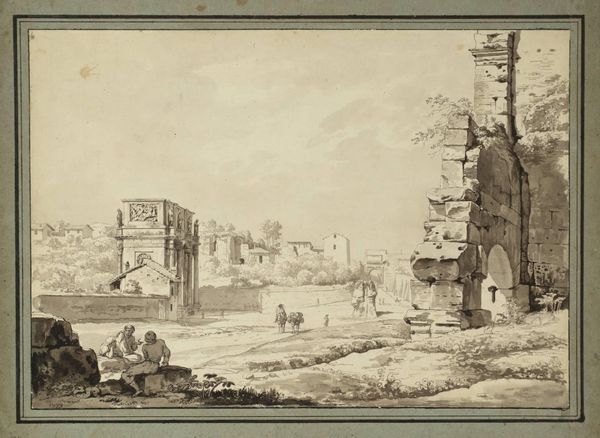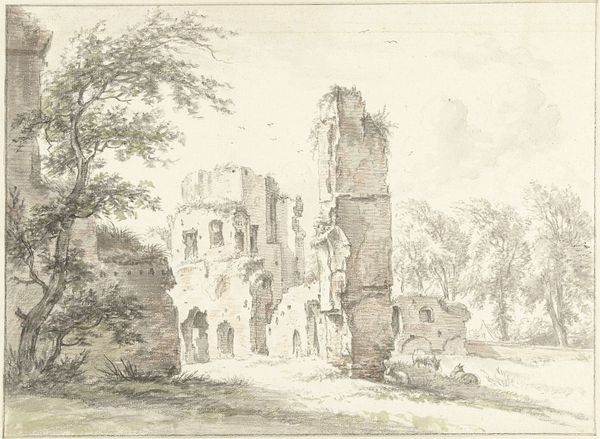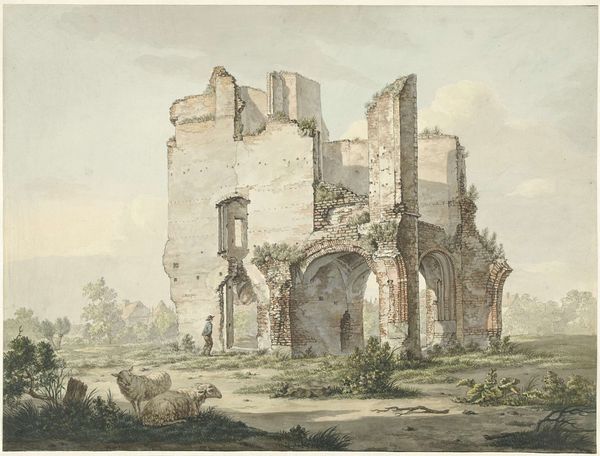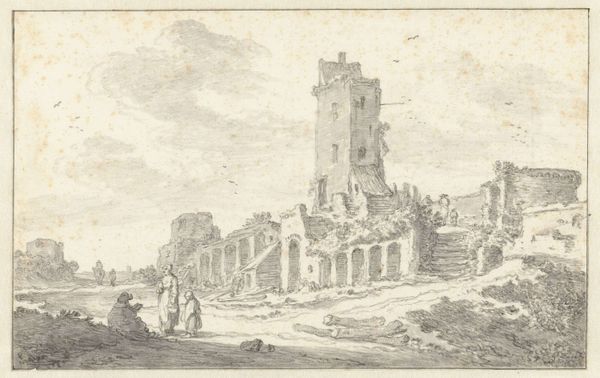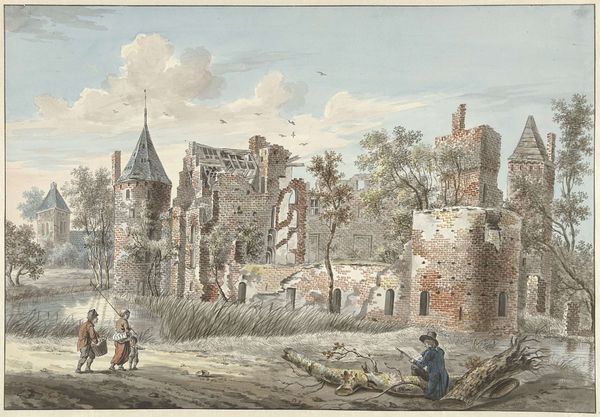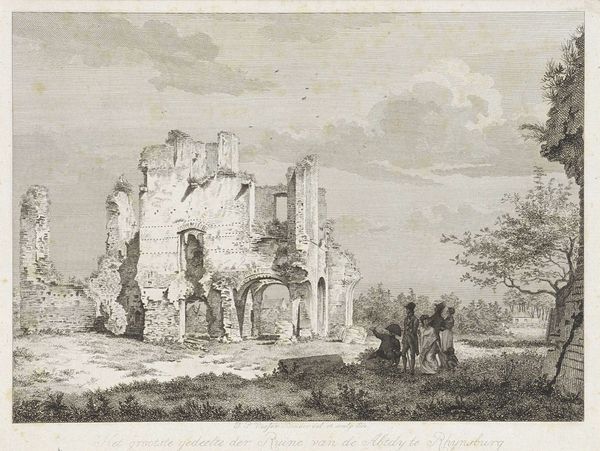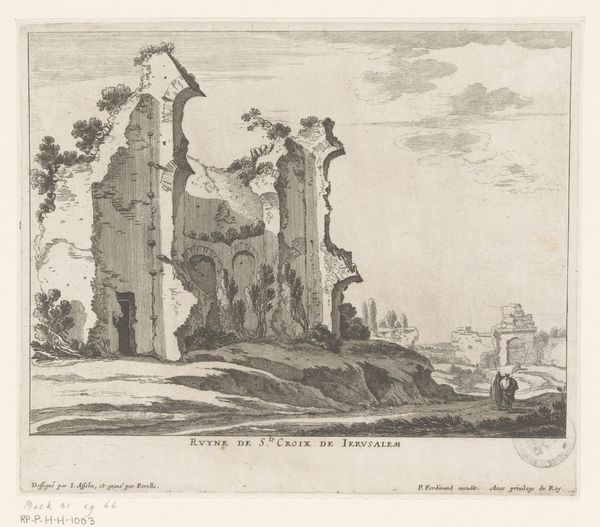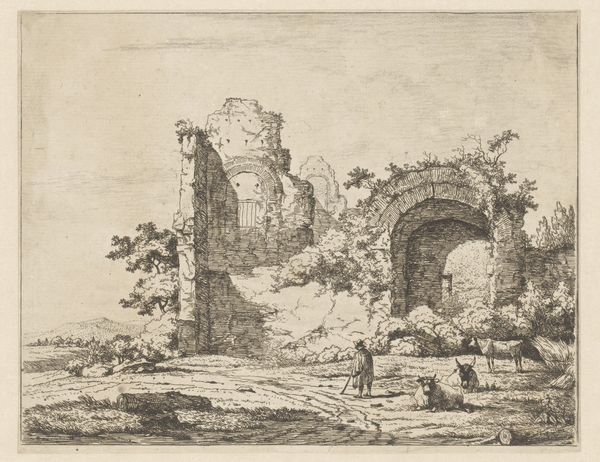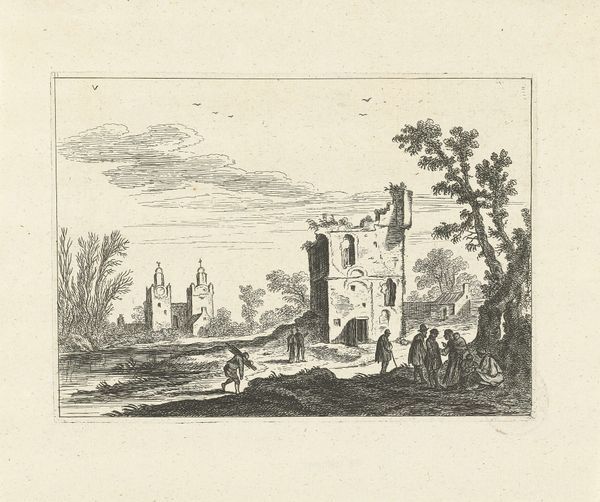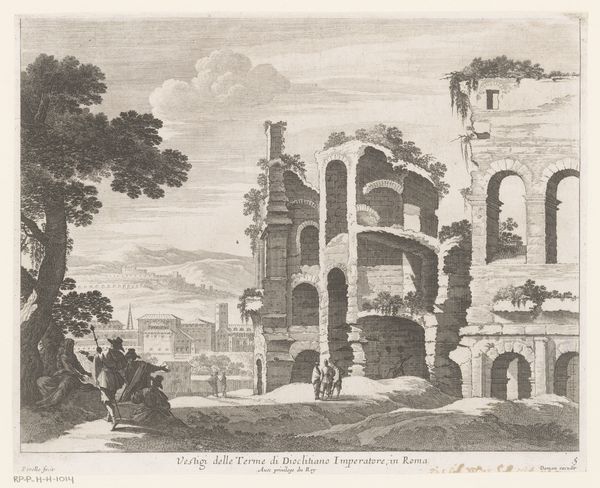
Dimensions: support: 350 x 493 mm
Copyright: CC-BY-NC-ND 4.0 DEED, Photo: Tate
Editor: Here we have Jacob More's "Roman Ruins." It’s undated, but currently held at the Tate. The pale washes create a sense of decay. What do you see in this piece, particularly about the materials and the social context they suggest? Curator: This print speaks volumes about the consumption of the past. Note how the artist depicts the ruins not as majestic remnants, but as a source of materials – even fodder for the picturesque. Consider the labor involved in quarrying, transporting, and eventually transforming these stones. Editor: So, it's not just about the visual representation, but about the life cycle of the materials themselves? Curator: Precisely. It prompts us to think about how the ruins have been continuously repurposed and consumed, challenging a romantic view. Editor: I hadn't thought about the ruins as a commodity. It definitely shifts my perspective. Thanks! Curator: Indeed. Understanding the materiality helps us move beyond simple aesthetics.
Comments
Join the conversation
Join millions of artists and users on Artera today and experience the ultimate creative platform.
tate 6 months ago
⋮
The Scottish artist, Jacob More, resided in Italy for twenty years, from 1773 until his sudden death in Rome ‘of a bilious fever’. During this period, More established a reputation as the foremost British landscape painter of his generation: Joshua Reynolds, president of the Royal Academy, called him ‘the best painter of air since Claude’. More was also a dealer in antiquities and works of art, and a garden designer. Just before his death he completed a ‘Panorama of Rome’, which was exhibited at Buckingham House (now Buckingham Palace). Gallery label, April 2007
